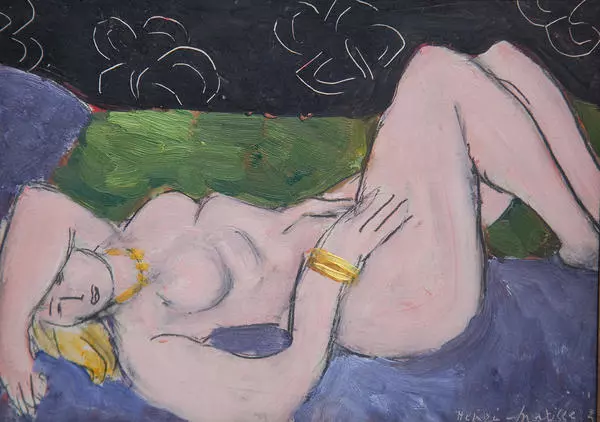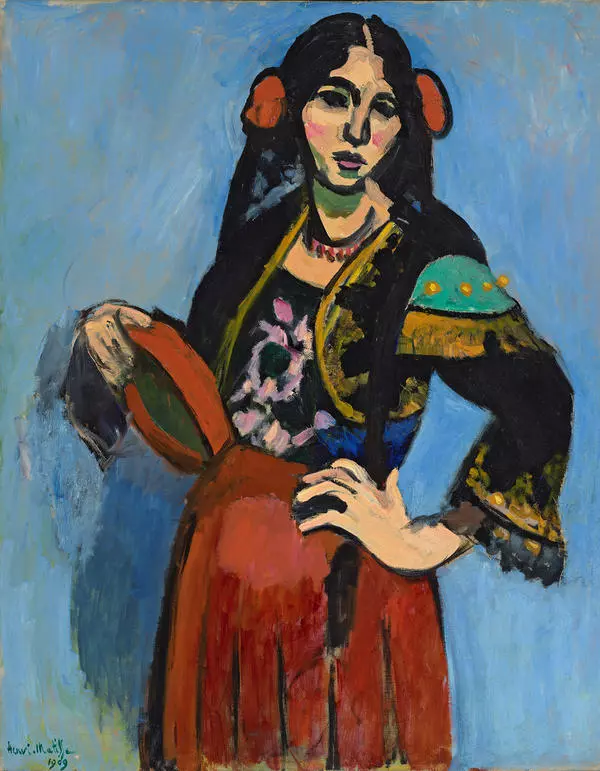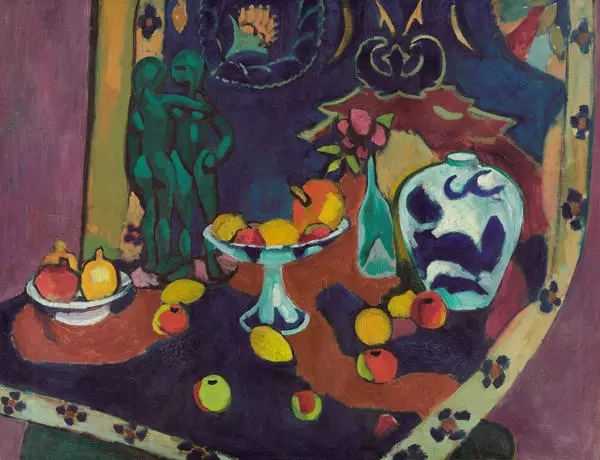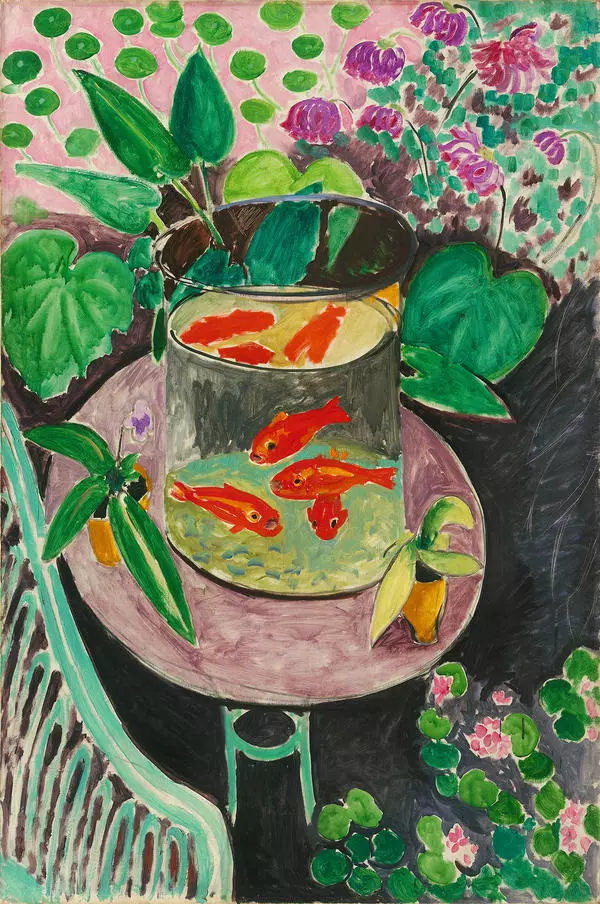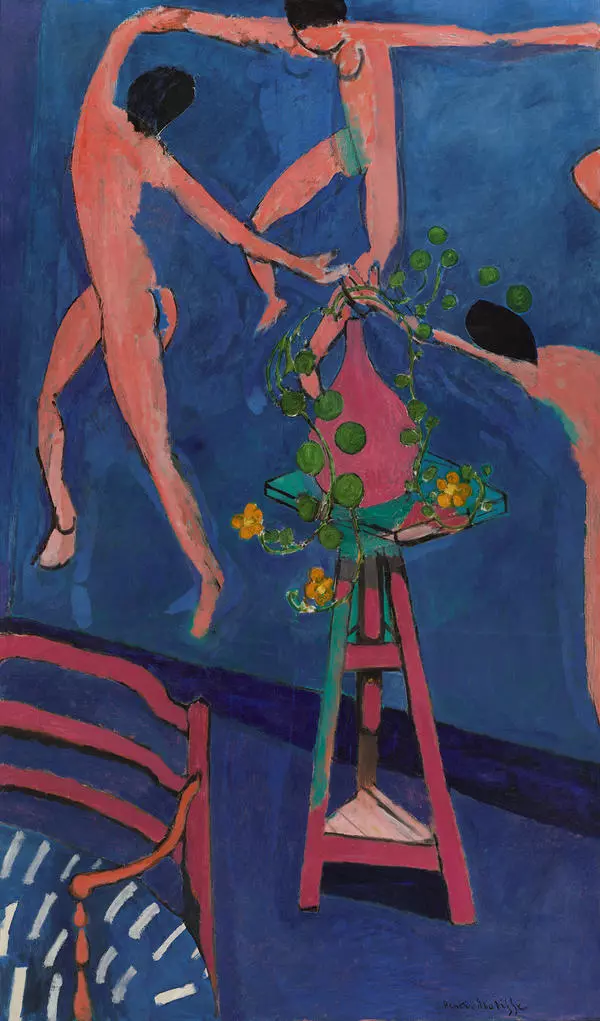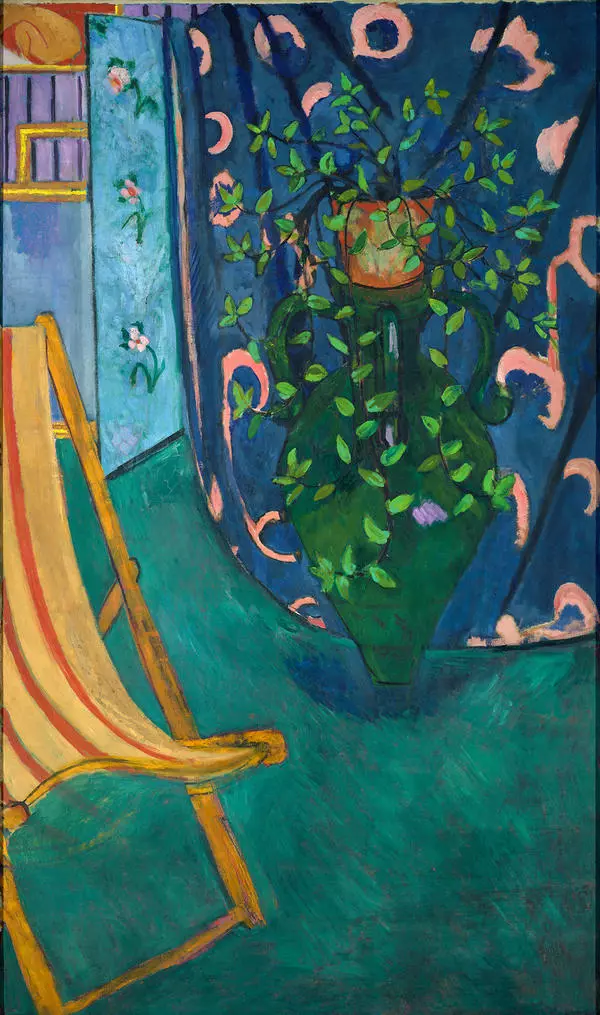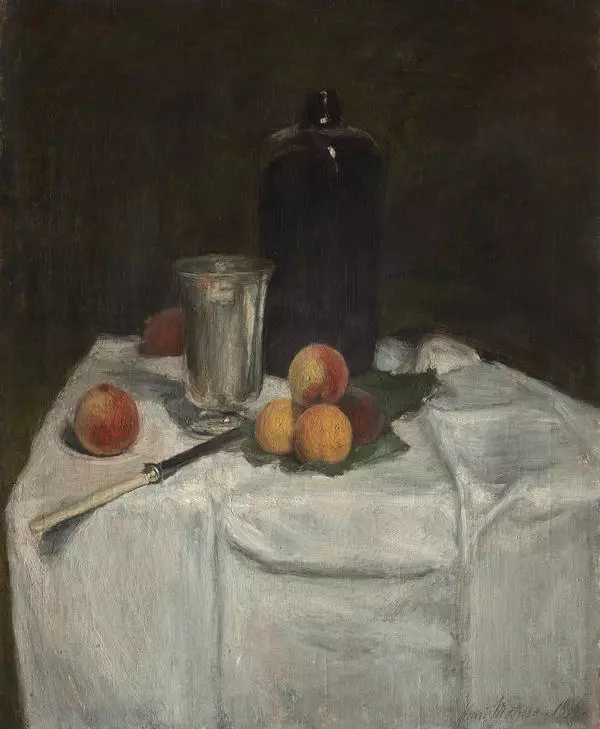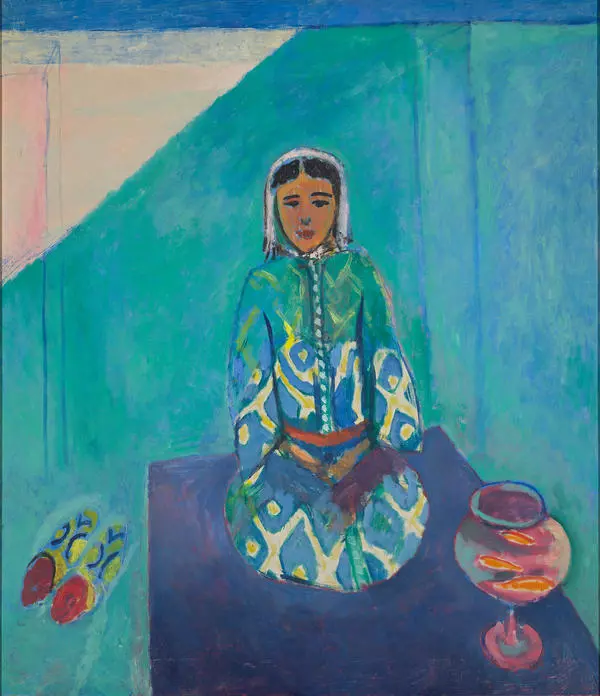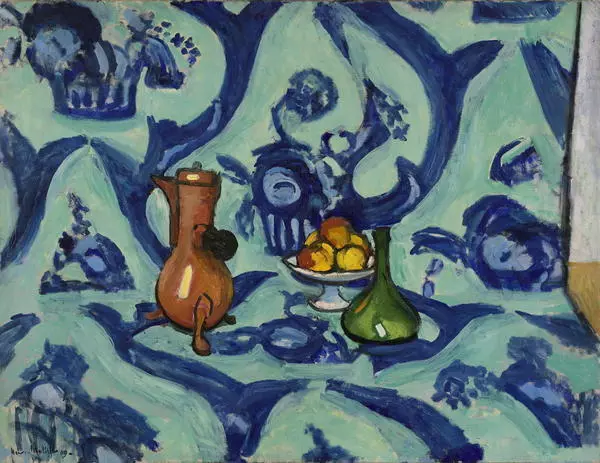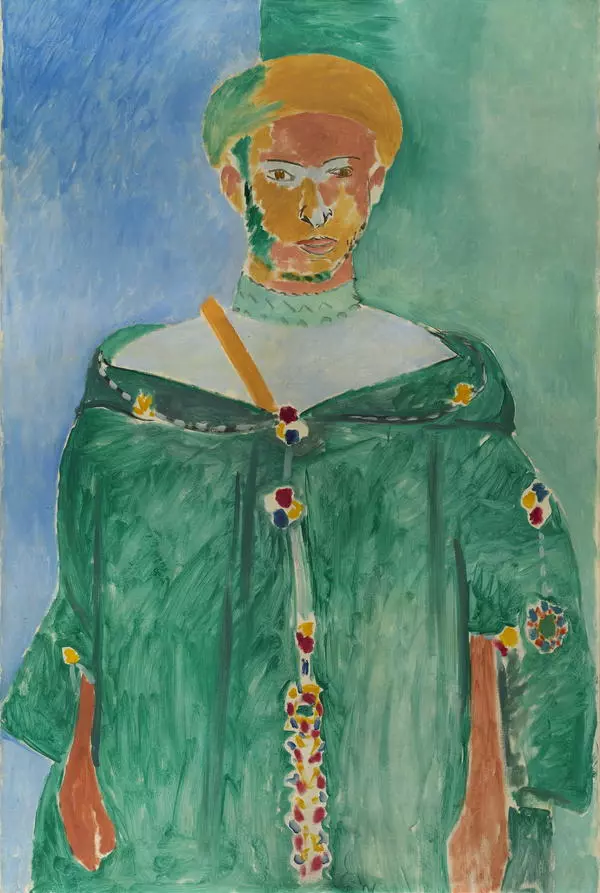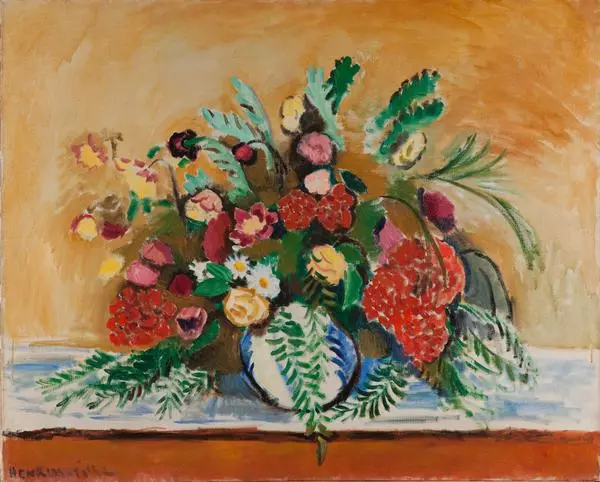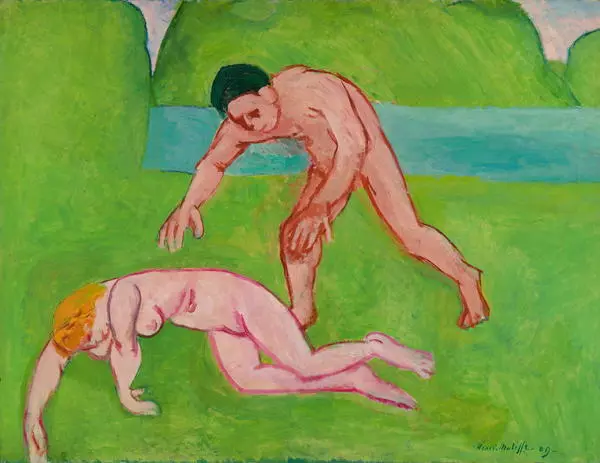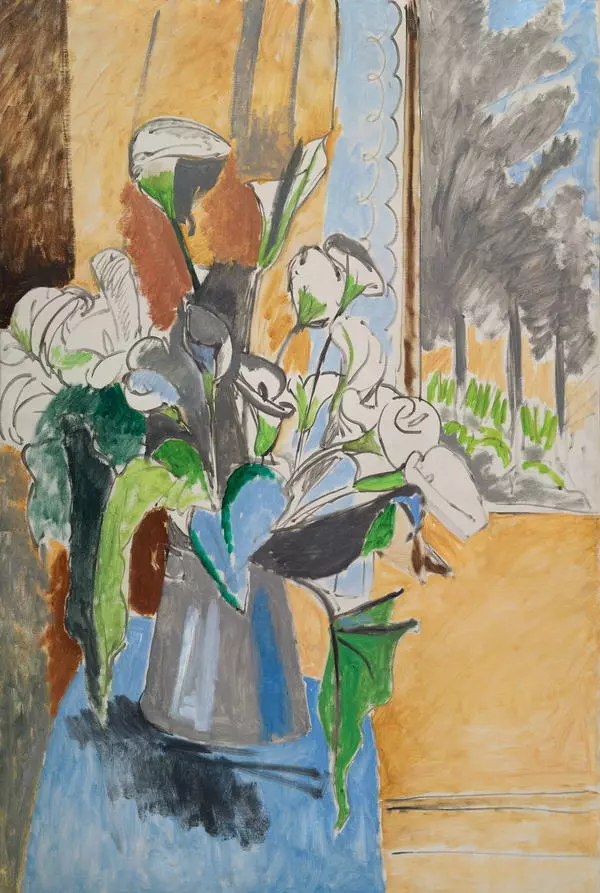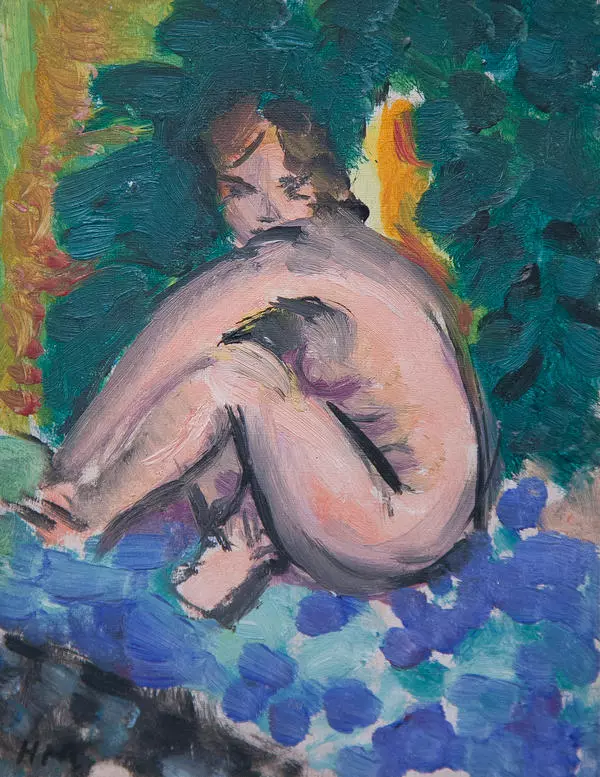The Artist's Studio (The Pink Studio)
Creation period
1911
Dimensions
182x222 cm
Technique
oil on canvas
Collection
Exhibition
22
Open in app#1
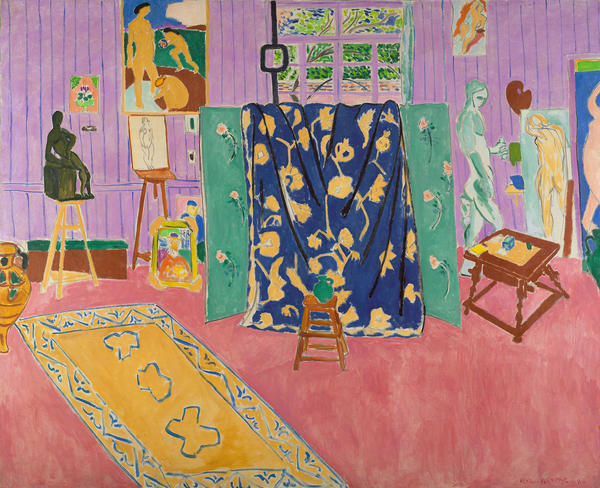
Henry Matisse
The Artist’s Studio (The Pink Studio)
#23
#2
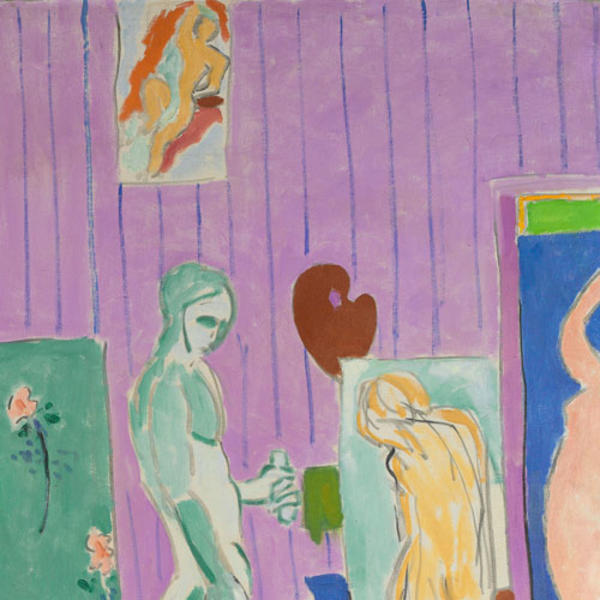
#8
According to witnesses, the walls of Matisse’s studio in Issy-les-Moulineaux were white. Nevertheless, the master depicted them as pink or red in his artworks. Matisse liked to quote Delacroix, who believed that accurateness does not equal truth. The artist’s own principle was:
#9
“Don’t spoil a good painting with truth”.
#24
Composition: vase - cloth - landscape
#3

#13
One of the most interesting compositional findings in the painting, which demonstrates the artist’s ability to combine reality and fantasy, is the imaginary vertical line starting from the vase on a high stool. The vase is empty, but the ornaments of the blue draping hanging on the screen are somehow a substitute for fresh flowers. Then we see real nature through the window.
#25
Fabrics and carpets
#4
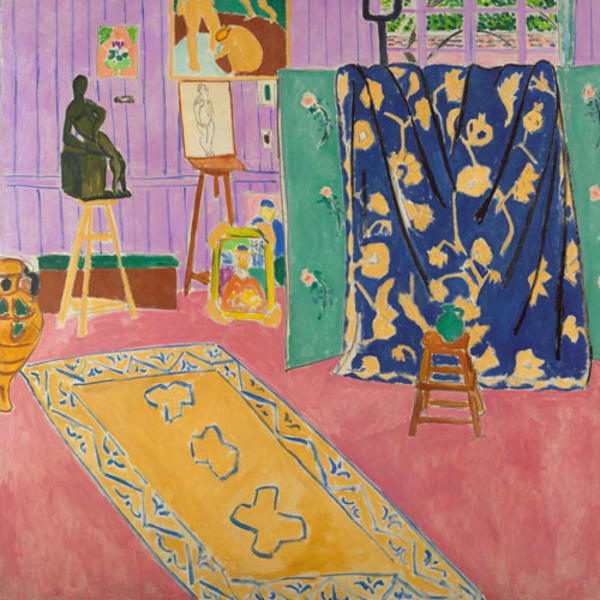
#14
Curious ornamental textiles, carpets, and draping are a recurring motif of paintings by Matisse. Interestingly, his paternal ancestors were weavers, and the region where the artist came from was famous for its textile industry.
#29
The colour
#31

#30
This canvas is like a colorful symphony: the pink color interacts with ochre and light emerald hues, and the yellow carpet with the blue ornament is balanced by the blue and yellow textile. It is no coincidence that a few paintings by Matisse, including “The Artist’s Studio”, “The Red Studio”, “Still Life with Aubergines”, and “Painter’s Family”, were called “symphonic interiors”.
#27
The interior
#28
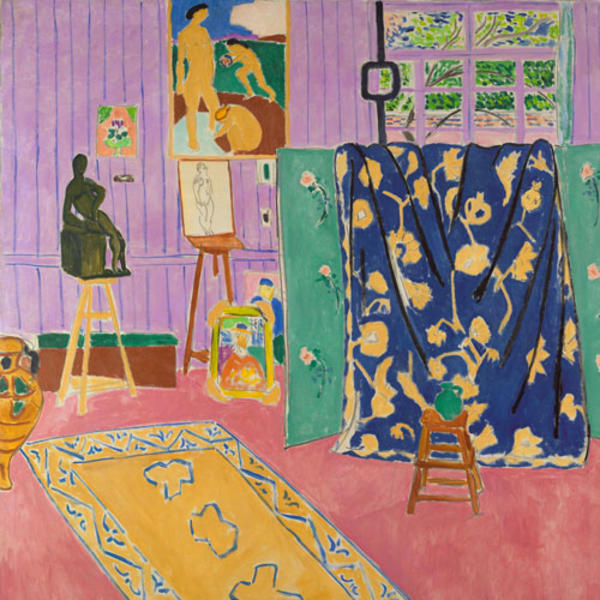
#26
By 1911, Matisse was already a mature and experienced artist, familiar with many styles of Western and Eastern art. Though the interior of “The Artist’s Studio” was mostly painted in a transparent, watercolor-like manner, the landscape behind the window, consisting primarily of separate thin brush strokes, is a sudden but obviously intentional return to impressionism.
#32
Self-portrait
#34
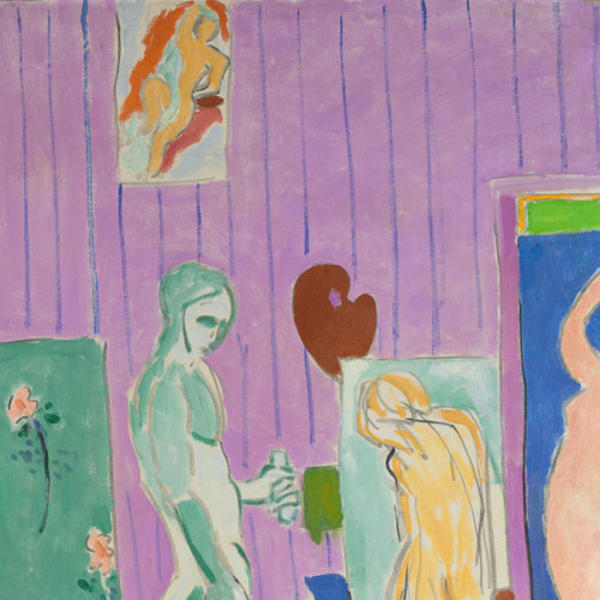
#33
Matisse considered this painting to be a kind of self-portrait. The studio interior tells us about the painter, but the most important aspect of it is his own artworks; we can see paintings within the painting. There is a place for both paintings (the most famous being “The Luxury” (1908) and one of the versions of “Dance”, which is now housed in New York) and sculptures – works that Matisse also gave a lot of time and energy to. The look of the studio shows us who the artist is, what his interests are, what he does, and how he lives.
read morehide
00:00
00:00
1x
The Artist's Studio (The Pink Studio)
Creation period
1911
Dimensions
182x222 cm
Technique
oil on canvas
Collection
Exhibition
22
Open in app
Share



